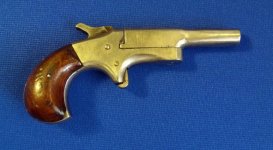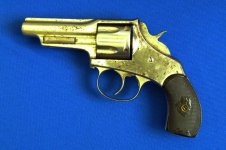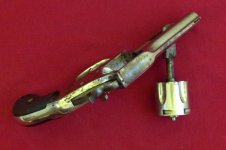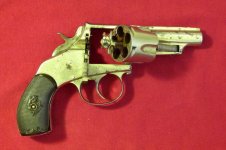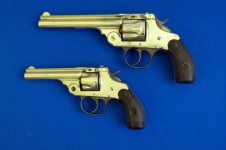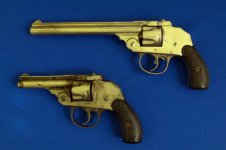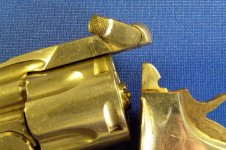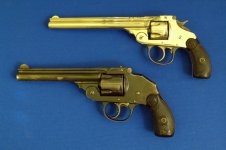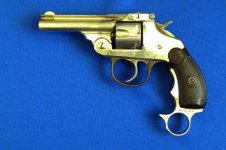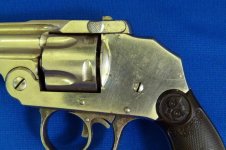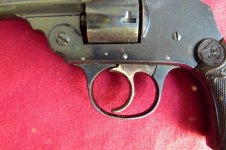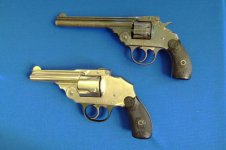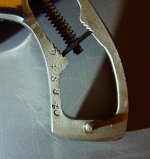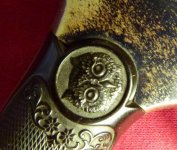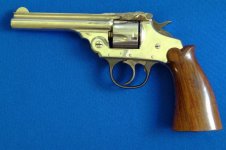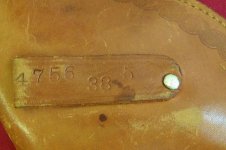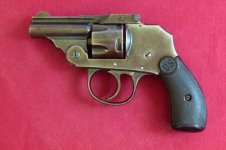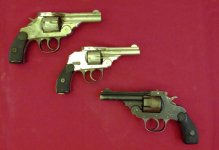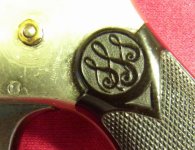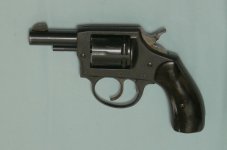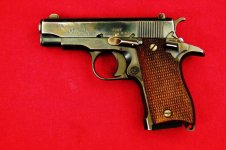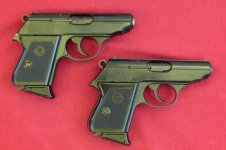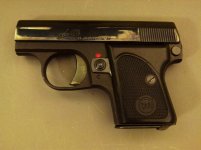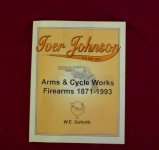Occasionally there are questions about Iver Johnson handguns on the forum. Hopefully this brief survey will help answer some of them. Mods, if this takes up too much bandwidth (8 posts, with pix), please feel free to delete. In 1871 a Norwegian immigrant, named Iver Johnson, along with another former employee of the Allen & Wheelock Company, Martin Bye, formed Johnson and Bye, Gunsmiths. The company was later renamed Iver Johnson and Company, and then Iver Johnson Arms and Cycle Works. Iver Johnson died of tuberculosis in 1895 and his sons ran the company thereafter. The first product of the company was a 30 caliber single shot percussion pistol, the Hero. Small single shot 22 caliber derringver type pistols such as the Eclipse were also produced.
Then came a line of spur trigger revolvers. None bore the name Iver Johnson, in calibers 22, 32w, 38 and 41 rimfire. Another line was bulldog type solid frame double action revolvers made in 22, 32 38 rimfire and 44 Webley and 44 Bulldog center fire.
In 1879 Iver Johnson produced a double action revolver with a swing out cylinder in 38 S&W caliber. The cylinder was pivoted at the front, and it could be pushed down on the pivot for ejection. It was very advanced for its day but few were made.
Most Iver Johnsons are in far from prime condition. They were using arms and were rode hard and put away wet. The ravages of black powder residue and corrosive primers are all too visible.
Photo 1. Eclipse single shot 2 pistol.
Photo 2. Model 1879 revolver.
Photo 3. Model 1879 with cylinder swung out.
Photo 4. Model 1879 with extractor extended.
Then came a line of spur trigger revolvers. None bore the name Iver Johnson, in calibers 22, 32w, 38 and 41 rimfire. Another line was bulldog type solid frame double action revolvers made in 22, 32 38 rimfire and 44 Webley and 44 Bulldog center fire.
In 1879 Iver Johnson produced a double action revolver with a swing out cylinder in 38 S&W caliber. The cylinder was pivoted at the front, and it could be pushed down on the pivot for ejection. It was very advanced for its day but few were made.
Most Iver Johnsons are in far from prime condition. They were using arms and were rode hard and put away wet. The ravages of black powder residue and corrosive primers are all too visible.
Photo 1. Eclipse single shot 2 pistol.
Photo 2. Model 1879 revolver.
Photo 3. Model 1879 with cylinder swung out.
Photo 4. Model 1879 with extractor extended.
Attachments
Last edited:

